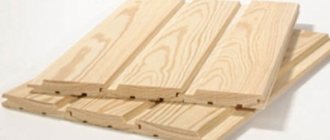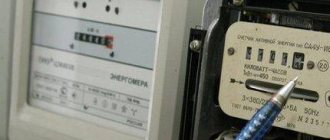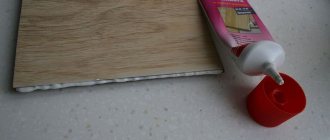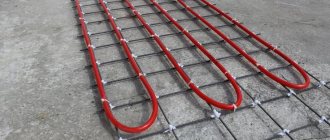Since the appearance of the first gas appliances and until recently, they were connected only with steel pipes.
Now everything has changed dramatically: flexible gas hoses have become firmly established in everyday use, and have already managed to practically displace their outdated predecessors. They are much more convenient to use, easier and faster to connect to the main line.
Don't know what type of hose to choose from the range offered on the market? Let's figure it out together - the article discusses the main types of products used for gas connections, highlighting their advantages and disadvantages.
We also provide useful recommendations for choosing the best flexible eyeliner option. The material is supplemented with video tips and visual photos depicting hoses made of various materials.
Oxygen
Oxygen hoses were often used in Soviet times, since there were simply no other options for connecting via flexible hoses. Now this product fades into the background. Cost - from 60 rubles per linear meter without tips.
p, blockquote 8,0,0,0,0 –>
p, blockquote 9,0,0,0,0 –>
- ability to withstand high pressure (up to 20 atmospheres);
- ease of installation;
- cheapness;
- does not conduct electricity;
- can be selected to suit any pipe diameter.
p, blockquote 10,0,1,0,0 –>
At the same time, oxygen products are short-lived and require careful attention:
It is important to remember that the oxygen connecting hose is not a special gas hose; it is needed for other purposes, so it is better not to use it unless absolutely necessary.
Features of self-installation of flexible eyeliner and care for it
After installation, the hose must be in a visible place and freely accessible. Before installing the product, you should check the integrity of the corrugation and fastening, because defects may appear during transportation or as a result of improper storage.
Having installed the bellows liner, it should be in a visible place so that free access is provided to it.
When tightening connectors, do not use excessive force or use gas wrenches, as this can strip the threads or damage the product. It is recommended to use an adjustable wrench to tighten the nuts. Other rules to follow during installation:
- Do not twist or bend the cable too much. You need to understand that you can only stretch the hose before installation; after installation, it is prohibited to increase the length of the product.
- After completing the installation of the hose, you need to open the water and monitor the condition of the connections for 5-10 minutes. Then, using a light, dry cloth, check the joint for dryness; if drops are detected, you need to re-tighten the union nuts.
The main problems that may arise during operation are mainly associated with the purchase of a low-quality product, and low-quality products are not always characterized by a low price
Therefore, it is necessary to pay attention to the appearance of the finished product and the quality of the joints made.
Another problem that leads to water leakage is weak compression of fitting connections. To avoid purchasing of dubious quality, hoses should be purchased only from certified points and only from sellers who can provide documents for the product.
Replacing the hose yourself is not a problem, the main thing is to choose the right hose that meets all the parameters
High-quality products can be operated at temperatures above 100 °C, which allows them to be used as a heating supply. Thanks to the high-quality materials used in production, the hoses are resistant not only to temperature, but also to pressure changes. Even in the event of a sudden supply of water under high pressure, as a result of which water hammer is possible, stainless steel bellows guarantee the preservation of the integrity of the shell.
Bellows flexible water supply is considered a modern option for connecting plumbing fixtures and household appliances that require access to a central water supply.
Rubber-fabric
The cheapest of specialized components from 120 rubles for 0.5 meters with tips (finished product). The rubber-fabric hose has:
p, blockquote 13,0,0,0,0 –>
- relatively short service life, on average from 5 years depending on the quality of the materials used;
- insufficient level of rigidity;
- low permissible temperature;
- product length from 0.4 to 7 meters.
Read also: What is flux used for?
p, blockquote 14,0,0,0,0 –>
Otherwise, it’s a good option for connecting a stove, which has its advantages:
p, blockquote 15,0,0,0,0 –>
- high level of electrical insulation;
- wide range (easy to find for any pipes);
- Thanks to its softness, it can be easily trimmed to suit existing conditions.
You can install the product yourself, but it is better to contact a specialist.
Piping a gas boiler in the heating system
After the wall-mounted gas boiler has been installed and the heating device is placed on the wall, the first thing you need to do is connect it to the heating system. Depending on which model is installed, single-circuit or double-circuit, there are different piping schemes. We will look at the connection process using the example of a wall-mounted double-circuit gas boiler.
Photo 1: Connection diagram for a wall-mounted double-circuit gas boiler
As you know, a double-circuit boiler, in addition to heating, is capable of producing hot water for household needs. Structurally, this is realized by installing one bithermal or two separate heat exchangers. A double-circuit boiler does not produce very much hot water, but it is quite enough for 1-2 distribution points (for example, a kitchen faucet and shower).
A modern wall-mounted gas boiler is very compact and already contains within itself the basic elements necessary for the operation of a heating system with forced circulation, such as: a circulation pump, an expansion tank, a safety group. In the heating systems of small private country houses, this is more than enough, but if necessary, you can install an additional expansion tank or another pump.
At the bottom of any mounted double-circuit boiler there are 5 pipes. They are connected to: supply and return lines of the heating system, supply and return of hot water supply, main gas. The gas connection is usually located in the center and is colored yellow. All other lines can be located in any order, depending on the model of the gas boiler. Therefore, before starting tying, it is necessary to clarify the purpose of each of them in the operating instructions.
Photo 2: Piping diagram for a wall-mounted double-circuit gas boiler
The piping of a wall-mounted gas boiler is done with polypropylene or metal pipes. The cross-section of heating pipes is usually larger than DHW pipes 3/4 and 1/2 inches, respectively. The heating system is connected to the boiler through American nuts. Ball valves are installed on each line for the convenience of dismantling the gas boiler without draining the coolant and to isolate the boiler from the heating system if necessary. To ensure tightness, all connections must be made using plumbing FUM tape or flax.
Coarse filters must be installed in the heating return line and in the DHW supply line. For ease of washing and cleaning, they are also cut off by shut-off valves. Often, in order to increase the service life of the secondary heat exchanger of a double-circuit boiler, a magnetic fine filter is additionally installed at the DHW supply.
With metal braid
It has an optimal ratio of price, quality and durability. Price from 140 rubles per 60 cm of finished product. The hose is made of vulcanized rubber and reinforced with textile thread. The outer part is a metal braid.
p, blockquote 17,0,0,0,0 –>
The gas hose is similar to the water supply (for the toilet, taps, shower). You can distinguish it by markings: plumbing products have blue and red marks for cold and hot water, and a yellow thread is woven into the braid of gas products.
p, blockquote 19,0,0,0,0 –>
One of the most common options, the popularity of which is associated with many positive qualities, including:
p, blockquote 20,1,0,0,0 –>
- high level of reliability;
- ease of installation;
- longer service life compared to rubber products;
- large selection of lengths and diameters;
- permissible temperature has a wide range from -35 to + 50 degrees;
- ease of use.
It is prohibited to use the product without installing a dielectric insert!
What is a dielectric insert for gas: main purpose
The dielectric insert (coupling) is a cut-off fitting that prevents failure of gas equipment, which can be caused by stray current. These currents are formed in the ground due to a violation of the integrity of a household or industrial electrical line. In addition, their source is a railway or tram line. Stray current enters the gas pipeline due to the difference between the resistance of the soil and the metal parts that make up the gas pipeline. It is through the main line that the current enters the household gas pipeline.
Another reason for the occurrence of stray current in the gas system may be poor-quality grounding of household appliances that come into contact with the gas pipe. In general, we can say that there are many reasons for the appearance of stray currents, and the consequences from them will only be negative. To avoid this problem, a dielectric is used for the gas hose, which is inserted between the gas tap and the bellows connection to the gas appliance.
The coupling is installed in order, firstly, to prevent failure of gas equipment, especially if it is modern equipment equipped with a large number of electrical functions. Secondly, the presence of a dielectric prevents the occurrence of a spark, which can cause a fire or even an explosion. For these reasons, according to the rules of the gas service, a dielectric must be used to connect gas equipment, be it a bellows or rubber liner. It comes in two types:
- dielectric couplings - attached between the gas pipeline and the hose that fits the device;
The thread of the fitting can be cut both outside and inside the end part
- dielectric bushings - are non-conducting bushings mounted in the place of dismountable mating of gas pipe elements.
Like bellows hoses, inserts are classified by size, which vary depending on the diameter of the threaded part - 1/2, 3/4 and 1. Therefore, for any type of flexible bellows gas line, you can select a product of the appropriate size. The thread of the insert can be either external or internal. Both bushings and couplings have the same strength characteristics and are designed for a pressure of 6 atmospheres.
Interesting information! The dielectric material used in the production process of the bushing is polyamide, a non-flammable polymer characterized by a significant resistance of approximately 5 million ohms.
Dielectric couplings are special fittings with threaded ends, mounted between the gas pipeline and the fuel-consuming device.
How to properly install the dielectric when making bellows connections
According to the state safety standard, a dielectric insert must be installed between the gas tap and the bellows connection. Basic steps to be taken when installing the bushing:
- Turn off the gas valve. It is important to leave the gas on the stove so that it all burns out.
- Take 2 adjustable wrenches: with one you need to hold the valve body, and with the second, you need to tighten the nut of the bellows connection that connects the pipe to the gas appliance.
- Screw any seal onto the free ends of the coupling (a polymer version is best for this), and then manually screw the dielectric into the gas pipeline.
- Again, using 2 keys, one of which holds the valve, and the second holds the coupling, the product is screwed in until it stops. It is important not to overdo it here, so as not to strip the threads and deform the valve body.
- Screw the nut from the bellows hose onto the other end of the coupling, holding the dielectric with an adjustable wrench, and tighten the connection firmly.
After completing all the steps, you need to check the joint for leaks. To do this, use either a small brush or a shaving brush, which is first lathered generously. A soap solution is applied to all joints and inlets, after which the gas tap is slowly opened. If even small bubbles or foam suddenly appear, the tap should be turned off and the quality of the joints should be additionally checked. You can use a gas appliance only if the soap solution does not bubble. Neither matches nor lighters should be used to check leaks, as in the event of a leak they can cause a tragedy.
Any sealant must be applied to the free ends of the dielectric coupling
How to make a safe gas connection: connection features and safety precautions
Regardless of which hose for the gas stove is chosen: bellows or any other flexible hose option, the connection will be made according to the same pattern. Before connecting the hose, you need to unfold the gas device and inspect the back wall of the product. On some models, the gas pipe is marked “Output”. Depending on the configuration, the product must be placed straight or at a slight angle. In any case, it is important that the hose does not bend too much. To avoid this, additionally purchase corner adapters that allow you to change the angle of direction of the sleeve. In advance, before carrying out all work, it is necessary to think about the location of the stove and calculate the length of the hose.
Important! Before starting work on installing or replacing a gas hose, you must turn off the gas valve and do not open it until measures have been taken to identify a possible leak.
The riser is most often located in one of the corners of the kitchen, and a pipe extends from it, connected by welding, with a gas tap attached to it, to which a flexible bellows gas supply will be attached. If the faucet has an external thread, then a union nut is used to connect the hose. If there is an internal thread, the sleeve is screwed directly into it.
Before you begin work on installing the gas supply, you must turn off the gas valve.
It is imperative to install a paronite gasket between the entrance to the gas equipment and the hose, which comes complete with the tap. Some experts recommend purchasing a gasket equipped with a metal mesh yourself. If a high-quality faucet has been chosen, then you can be sure of the reliability of the gasket. After installing the paronite gasket, the bellows hose is screwed to the outlet of the plate, and then all connections are tightened using a wrench. At the last stage, it is necessary to conduct an inspection for the possible presence of leaks, using a soap solution, as in the case of installing a dielectric. If no bubbles appear, the cooker or other device can be used safely.
PVC reinforced
PVC gas line is one of the latest developments. It does not conduct electricity, does not break down like rubber, and is almost as durable as a bellows hose. It has 2 layers: an inner one made of black PVC, and an outer shell made of yellow PVC. Due to their novelty, not all gas services accept them for operation, so it is better to consult an authorized organization in advance. Price for 60 cm of product - from 140 rubles.
p, blockquote 22,0,0,0,0 –>
p, blockquote 23,0,0,0,0 –>
Properties of reinforced PVC hoses:
p, blockquote 24,0,0,0,0 –>
- flame retardant;
- dielectric;
- withstands hot plate contact test;
- quite cheap with a comparable service life;
- resistant to oil mist;
- operated under conditions of increased loads;
- meets the requirements of GOST R 52209-2004, GOST12.2.063-81, GOST12.2.003-91;
- guaranteed service life - 12 years, actual service life - more than 20 years;
- length from 60 cm to 5 m.
Teflon sleeves
Polytetrafluoroethylene, or PTFE, better known as “Teflon,” was discovered by 27-year-old chemist Roy Plunkett in 1938, who accidentally discovered that tetrafluoroethylene gas he pumped into a pressurized container spontaneously polymerized into a white, paraffin-like powder. In 1941, the company where Plunkett worked was granted a patent for "Teflon", and in 1949 the company became a division of the American company DuPont. From the day it appeared to this day, the material has found wide application and is used in many industries. Teflon is best known for its widespread use in the production of non-stick cookware. Teflon is used in the chemical, electrical and food industries, in medicine, on vehicles, and for military purposes.
Bellows
Bellows tubes are most often recommended by gas equipment installation specialists. This option is the most reliable and most expensive. But given the very long service life (up to 30 years), its cost is justified. Price from 170 rubles for 60 cm of finished eyeliner.
p, blockquote 25,0,0,0,0 –>
Bellows (from the English brand name Sylphon) is an elastic single-layer or multi-layer corrugated shell made of metal, non-metallic and composite materials that maintains strength and tightness under high-cycle deformations of compression, tension, bending and their combinations under the influence of internal or external pressure, temperature and mechanical stress . (https://ru.wikipedia.org/wiki/Bellows)
The bellows hose is made of stainless steel, with a PVC coating on top. This ensures that it will last a long time: the average lifespan is 25–30 years. The metal braid reliably protects from mechanical influences, and the polyvinyl chloride coating provides electrical insulation and resistance to chemicals. Thanks to the corrugated surface, the product bends easily.
p, blockquote 27,0,0,0,0 –>
p, blockquote 28,0,0,0,0 –>
Bellows gas hose has the following advantages:
p, blockquote 29,0,0,0,0 –>
- can be connected to any gas equipment: stoves, boilers, etc.;
- has connecting dimensions 1/2″, 3/4″, 1″;
- has excellent flexibility;
- withstands pressure up to 6 atmospheres;
- wide range of operating temperatures: from -50 to +250 degrees (installation outdoors is allowed; nothing will happen to it if it comes into contact with hot surfaces);
- able to withstand mechanical loads, aggressive environmental influences, and household chemicals;
- hoses comply with the requirements of GOST R 52209-2004, GOST12.2.063-81, GOST12.2.003-91;
- warranty service life - up to 15 years;
- service life – up to 30 years;
- is able to ensure the tightness of the system even under extreme loads, for example, during an earthquake.
The length of the bellows gas hose varies depending on the manufacturer.
p, blockquote 30,0,0,1,0 –>
With Emiflex, the eyeliner can increase in size by 2 times and has the following parameters (in meters):
p, blockquote 31,0,0,0,0 –>
- from 0.26 to 0.52;
- from 0.5 to 1.0;
- from 0.75 to 1.5;
- from 1.0 to 2.0.
And the hoses have a fixed length (in meters):
The only thing that can scare off a buyer is the price. But considering its durability, it is the most profitable purchase.
Do not use the hose without installing a dielectric insert!
p, blockquote 34,0,0,0,0 –>
Manufacturers
Today, bellows liners can be purchased from both domestic and foreign manufacturers. One of the main Russian manufacturers is, which has registered the Monoflex trademark. The quality of this company's products is guaranteed by foreign technologies used in the production process. Products under the brands “Akvatekhnika” and “Flexiline” have also proven themselves.
Also, a budget version of the bellows is offered by the company Zurflex from Belarus. At an affordable price, the quality of this brand’s products can be compared with large European manufacturers, for example the German company Witzenmann. The traditional quality and reliability of the products of this company, located in Germany, is represented not only in bellows wiring, but also in other types of various plumbing equipment.
One of the leading suppliers of water wiring at the moment is the Turkish company Ayvaz, whose equipment has virtually no competitors in terms of technical parameters. Their wiring is reliable, durable and has a thoughtful design that eliminates unnecessary elements. The Italian companies Emiflex and Idrosapiens are the undisputed leaders in the market of flexible gas lines. The bellows hoses of these companies in Russia are certified by Rostest and Gosgortekhnadzor. The service life of such eyeliners is up to 15 years or more.
Often on the market, under the logos of world brands, you can buy fakes from China. There are two categories of Chinese equipment:
- products manufactured in China under official orders from European companies;
- wiring made by pirate method.
In the first case, the customer company transfers production to China to reduce costs due to the low cost of labor and materials. In the second case, the quality of the product leaves much to be desired, which can lead to leakage of water and gas. Also, one should not exclude the presence of various dangerous chemical and even radioactive compounds in the product. Price, unfortunately, is not a guarantee of product quality, so you must carefully study all products and request photocopies of the necessary certificates.
Rules for choosing a gas hose
A few simple tips will help you choose a gas hose, save time and money, and avoid troubles with energy leaks:
p, blockquote 35,0,0,0,0 –>
- Buy any products only in specialized stores, and do not forget to ask the seller for a quality certificate.
- You cannot buy Chinese hoses: they are thin and quickly become unusable. There are also many fakes.
- The slabs are connected only with those sleeves that have a special yellow mark. They cannot be replaced with plumbing ones. The latter are not designed for such loads and wear out in a few weeks.
- When purchasing, the eyeliner must be carefully inspected for damage.
- Select the size so that the product sags and does not stretch.
- Pay attention to the mounting methods - fitting or nut - select them according to size.
Important! For a stove with electric ignition, you need to buy a fireproof flexible liner with insulators in the form of white plastic rings between the nuts and braid, or use a dielectric insert.
p, blockquote 37,0,0,0,0 –>
Read also: Car battery direct and reverse difference
Types of gas taps
In old buildings, two types of cranes were usually installed on vacation:
- petal;
- suberic.
The differences between the designs of these products can be seen in the figure.
When the slab is replaced or the valve fails, it is best to install a new ball valve.
This device is much better, but more expensive. Installation of an Italian faucet will cost $10. You can also install a cheaper domestic faucet, costing $5. They are no worse than their foreign counterparts, but sometimes have defects. Therefore, do not forget to take a receipt with you when purchasing so that you can exchange the defective product for a good one.
Installation recommendations
When installing the hose, use the following recommendations:
p, blockquote 38,0,0,0,0 –>
- The hose must be laid in an easily accessible place. It is not safe to hide it in a wall or under the floor.
- The bending radius should not be less than three times its diameter.
- The product must not be pulled, twisted, bent, or painted.
- Metal parts must be protected from condensation, which leads to oxidation of the material.
- You cannot connect steel elements (tips) with copper ones, this can lead to electrolytic damage to the product. Acceptable combinations are steel with steel, brass with copper.
- All connections must be tightened tightly, but without excessive force, so as not to damage the threads.
- A dielectric insert is installed between the tap and the gas hose, which prevents the accumulation of stray currents, which can lead to overheating of the braid, damage to the device, and melting of the rubber.
Installation requirements
The necessary conditions:
- The hose must be accessible.
- It is prohibited to connect several devices to one flexible element.
- The soft element is allowed to sag and twisting is not allowed.
- Docking is ensured by a threaded connection. Welding and soldering are not used.
- If there is a metal braid, it is necessary to prevent the presence of condensation on its surface.
- The gas hose is replaced after the end of its service life. This standard is set by the manufacturer.
It is better to entrust the installation of the connection to specialists to prevent leakage of the substance.
Gas line service life
After installing the hose, you should check its service life and remember the installation date. The product, depending on the type, is designed for a period of 5 to 15 years. It is important not to forget to replace it on time.
p, blockquote 39,0,0,0,0 –> p, blockquote 40,0,0,0,1 –>
Guaranteed service life is indicated in the product passport and in the certificate of conformity.
- rubber hoses (with and without sheath) – 5-year warranty, service life up to 10 years;
- PVC eyeliner – 12-year warranty, lasts up to 20 years;
- bellows gas hose - 15 year warranty, does not require replacement up to 30 years.
The gas heating boiler is connected to the main line using a flexible hose.
Choosing and installing a hose for a boiler is a very important matter , because we are talking about gas.
An incorrect connection to the gas pipeline may result in an explosion .
To supply household gas, flexible gas hoses specially designed for this purpose are used. The use of water hoses for this purpose is strictly prohibited.
Reliable signs of a fake
Regardless of the type of flexible gas hose, you should ensure the authenticity of the product before purchasing. The fact is that recently cases of defects and counterfeits launched for sale by Chinese manufacturers have become more frequent.
Well-known European brands are usually the targets of counterfeiting. The difference in quality between the original and the fake can be colossal.
It is possible to play it safe and distinguish a quality product from a counterfeit one.
To do this you need:
- take the time to conduct a thorough visual inspection;
- check whether the technical characteristics correspond to those indicated in the product passport;
- require the seller to present quality certificates confirming the safety of the device intended for working with explosive substances;
- do not buy goods at a suspiciously low price, which is not typical for products in this category.
The structure of counterfeit goods may contain dangerous chemical or radioactive impurities. Defective hoses are short-lived and often cause explosions.
Varieties
three types used in everyday life :
- Rubber-fabric.
- Rubber reinforced.
- Bellows.
They are made from various materials, have different technical properties and service life. Each of the three types of gas hoses has both pros and cons. The choice depends on the installation location and the specific case.
Rubber
Rubber hoses reinforced with textile thread are the softest among all types of hoses. They are economical, easy to install and maintain. A wide selection of hoses of this type is available in construction stores. You can easily choose a sleeve of the desired length and diameter .
Photo 1. Rubber soft gas hose, black, is economical and easy to connect.
Rubber gas hose is mainly used in dachas. This method of gas supply is the most affordable and easy to install, but also the most unsafe. Over time, the rubber cracks, which inevitably leads to gas leakage, so the use of this type of connection is only permissible for private sector gas cylinders.
In addition, these hoses lack rigidity and are sensitive to temperature changes. This type of hose is recommended to be replaced every two years, however, in practice they are used much longer. Modern sleeves with elastic components can last up to 5 years .
Reinforced
Much more common are reinforced rubber hoses, which are similar to water supply hoses. They are braided with steel threads on the outside. The inside is made of polymer material, although they are called rubber.
Reinforced hoses are also affordable and easy to use, but they are prohibited in several European countries . Our gas specialists also do not recommend using them or doing so in compliance with a number of rules.
Photo 2. Two reinforced hoses made of polymer material, one covered with corrugated steel on top.
The polymer sleeve inside is destroyed in the same way as the rubber one. In addition, steel is an excellent conductor of current, so it is necessary to use dielectric spacers during installation. When using metal-braided tubes, be sure to turn off the gas taps; this will extend the service life of the hoses. This type of hose can be used at temperatures up to +50 degrees.
Read also: Lathe 1u61 technical characteristics
Bellows type stainless steel
This is the only type of gas hose approved for household use. It is a dense corrugated braid that is resistant to high and low temperatures, high pressure and mechanical stress. There is a single-layer and multi-layer bellows.
It is made from both metallic and non-metallic materials. The shell creates increased safety; it prevents damage from most types of impacts.
Photo 3. The bellows gas sleeve is yellow, made of non-metallic material, coated with polymer.
This type of hose is made of stainless steel. Gas hoses are sold with and without insulation. The second type is coated with a polymer that does not conduct electricity. A hose with a diameter of at least 10 cm for uniform gas supply. Bellows hoses are an order of magnitude better in quality than others.
Reference! The most reliable samples are those with a polymer coating that protects them from environmental influences. These gas hoses last up to 30 years , they are safer, but also more expensive.
Advantages of bellows hoses for gas:
Connecting a gas cylinder to a stove how to connect a gas cylinder to a stove
Not everyone will afford to build a country mansion with all the amenities. Some of the population are content with small plots with wooden houses, where they come on weekends. There is no point in running a gas pipe to the house, and it is expensive, but connecting a gas cylinder to the stove will come in handy. And it’s inexpensive, and you can do it yourself.
Do you know what needs to be done to properly connect the cylinder to the stove? If not, then after reading this article to the end, it will not be difficult for you to make the connection yourself.
What you need to connect
- Gas stove. She must not be quite old. Be sure to check the integrity of connections and burners.
- Gas reducer (30 mbar). Experts consider gearboxes with threaded connections and brass nuts to be the most reliable.
- Gas hose. It should be 1.5 meters longer. For example, if there are 5 meters from the installation site of the slab to the cylinder, then you will need 6.5 m; this is necessary so that the hose is not connected under tension, so it can crack faster.
- Fittings and clamps for connections. This will be needed if you decide to use an old stove; new models already come with such adapters.
- The tool must be copper-plated or brass-plated. Safety rules provide for working with gas connections only with such keys; they do not give a spark in case of accidental failure.
- As an additional sealing material, you will need flax or fum tape.
- Soap solution.
A special gas hose must be used for connection. When purchasing in a store, explain this to the seller. Under no circumstances should you use an old hose that was lying in your basement; even if it looks good, it may have internal cracks and the consequences will be disastrous.
Work order
We will assume that the stove in the kitchen is already installed. The gas cylinder must be placed in another room or at least 5 meters away from the stove. The place for the cylinder must be clean and prepared. Build a special mount from wooden slats.
Connection to plate
First you need to connect the hose to the stove. This is a completely safe job. We screw it onto the hose of the stove, tighten it with a clamp and, screwing the fum tape onto the inlet fitting of the stove, wrap it until it stops.
Connection to cylinder
First you need to install a reducer on the cylinder. It is screwed onto a special adapter with the accompanying wrapping of fum tape.
The entire connection process must take place with a thorough inspection of each part:
- There should be no contamination on the gearbox and the cylinder, especially at the threaded connections.
- The hose deserves special attention. In addition to the appropriate length, it should not have cracks or narrowing, and do not allow it to twist. It is also better to replace it after the expiration date.
- There should be no rust on the clamps during operation; this can lead to their rupture. If corrosion appears, it is better to immediately replace them or purchase specialized ones with anti-corrosion treatment.
How to choose the right flexible gas tube?
It is safest to purchase a gas hose in a specialized store that has a state certificate of conformity . It is best to opt for the bellows type of sleeve.
Important! Beware of fakes of poor quality. There is a high probability of purchasing counterfeit goods on the market. This threatens that the sleeve will be made of thin, cheap rubber, which will quickly fail. Most fakes can only be distinguished from the original by a professional.
To identify a counterfeit, you need to carefully study the technical characteristics of the product, passport and certificate of conformity. You should not buy a product at a suspiciously low price.
Before purchasing, you need to take a measurement, then add 20% . You should not purchase a gas hose with a reserve. Standard sizes are 1–2 m. In everyday life, diameters of 1/2 or 3/4 inches are usually used.
The hose comes with two types of fastenings: with two union nuts with internal threads (female-female) or with a nut on one end and a fitting on the other (female-male). The thread is selected depending on the outlet on the device. It is preferable to opt for welded structures rather than those where the fitting is connected to the corrugation with glue.
Installation
The safest thing to do is contact a professional who will ensure the correct connection and provide a guarantee. After all, everyone knows from childhood that it is dangerous to joke with gas.
An unqualified connection to a gas pipeline can lead to an accident; everyone has seen the consequences of a domestic gas leak in the news.
However, a modern gas hose allows you to independently connect the boiler to the mains. Any adult can carry out installation while observing safety precautions
When working, you must adhere to the following rules:
- The length of the line is selected taking into account the distance over which the equipment is likely to be moved.
- The system is located in a place accessible for inspection.
- There must be no other connections on the device
- The product cannot be painted to avoid cracking of the material.
- The dimensions of gas hoses must comply with GOST standards.
- Do not twist, bend or strain the sleeve.
- Do not solder or weld the connection.
- Replace the hose with a new one in accordance with the manufacturer's recommendations.
Connection to the gas pipeline
To install the gas hose to the riser you will need an adjustable wrench, a screwdriver, a sealant, a brush and a soap solution.
First you need to prepare the room and shut off the gas supply to the network. Then the boiler is installed at the installation site and carefully leveled.
Each apartment has a gas riser , which has branches with taps at the ends, this is called a release.
A sealant is applied to the hose fitting and screwed into the tap during release. If the diameters do not match, then an adapter is needed, which is also sealed. The hose is connected to the boiler.
The system is then tested for leaks. To do this, use a brush to apply a soap solution to the joints and slightly unscrew the valve. If the connection is leaky, the solution will begin to bubble, otherwise nothing will happen. If a leak is detected, it is necessary to turn off the gas and check the winding of the seal.
Lastly, the equipment is checked for functionality and gas is supplied.
Attention! If you have any doubts, the best solution is to contact a specialist. The technician will connect the gas safely, reliably and in compliance with all regulations, and will also guarantee the correct operation of the system for many years.
Instructions for self-connection
Paying a gas technician for installation work is not too high, but many home craftsmen prefer to do everything themselves. This is a feasible task that requires the purchase of components and theoretical knowledge.
To connect, you will also need to prepare the following tools and buy materials:
- keys: gas No. 1, adjustable 22-24;
- a screwdriver for tightening the clamp, if required;
- sealants (Loctite 55 thread, flax, FUM - tape);
- gasket ½;
- gas sleeve;
- ball valve 1/2′;
- a brush and soap solution, which will be required to control the work.
A rag and a plastic stopper will also come in handy. The rag will be used as a temporary seal against gas leaks. The narrowed edge of the plug must be adjusted to fit the hole in the supply pipe. If during the extraction process a homemade part gets stuck, you can easily remove it with a corkscrew.
Step #1: Removing the old slab
Shutting off the crane when lowering is a primary task to ensure the safety of the work being performed. Next, you need to unscrew the locknut located on the outlet and remove the coupling. If the old slab has a coupling and locknut that were previously painted, this will significantly complicate the process of dismantling them.
Sometimes it is not possible to complete this procedure, then you will need to cut the eyeliner with a grinder.
The gas stove is dismantled after disconnecting the gas main from the conductor pipe. Difficulties that arise with unscrewing the lock nut on a metal pipe can be solved by cutting off the liner
In the process of unscrewing the squeegee located in the lowering valve, it is necessary to hold the valve itself with a key. It does not have to be removed unless you plan to replace the faucet. When they plan to delay the installation of the slab, an additional plug is installed on the lower side.
Step #2: Replace the faucet
There are situations when the wall is located very close to the tap and there is no way to dismantle it. In this case, it is necessary to bend the fastening and install a wedge between the wall and the pipeline. However, this is done in such a way that it is possible to continue doing the work.
It is necessary to prepare a piece of rag sufficient to completely block the pipe after dismantling the old tap. The next thing will be to tear it off without completely unwinding it. You will also need to prepare the selected type of seal. Do not forget to thoroughly ventilate the room during work to eliminate gas vapors.
After unscrewing the tap, the outlet from the pipe is tightly fixed with a finger and then with a wet rag. The main actions are aimed at eliminating gas escape from the pipe as much as possible. In this case, the thread on the branch should not be closed, since it will be covered with the selected sealant.
Before winding the seal, the threads on the lower end must be thoroughly cleaned. Next, its winding is carried out directly. This process ensures a reliable and airtight fixation of the new faucet, which is then tightly screwed on. The last step is to install the previously removed handle on the faucet.
Using soap foam, the tightness of the connection of the faucet and the gas pipe is checked. If the work was completed correctly, installation of the gas hose can continue.
If gas equipment is connected to the mains for the first time, you will definitely need to call a gas technician. In his presence, the equipment is checked for gas leaks when the valve is open. If the gas service worker does not find any violations, he must enter the established brand of stove into the register.
Step #3: Connecting the Flex Hose to the Stove
The external thread of the hose fitting is wrapped with a sealant. After this, it must be screwed into the tap on the branch pipe. The flexible hose is connected to the manifold at the finishing stage.
Next, the stage of test opening the tap on the lower side is mandatory to check for gas leaks. Using soap foam, the joints are treated with a brush. If foaming occurs when opening the gas tap, the work must be redone.
It is necessary to check the threads located on the manifold of the plate. Quite often it is 3/8′. In this case, you will need to install a 1/2′ adapter with a seal
When the work of replacing a gas hose is carried out in a private house where bottled gas is used, an additional replacement of the nozzle with a smaller diameter will be required. If this is not done, the burners will produce too much soot, which likes to settle on furniture and dishes in the kitchen.











